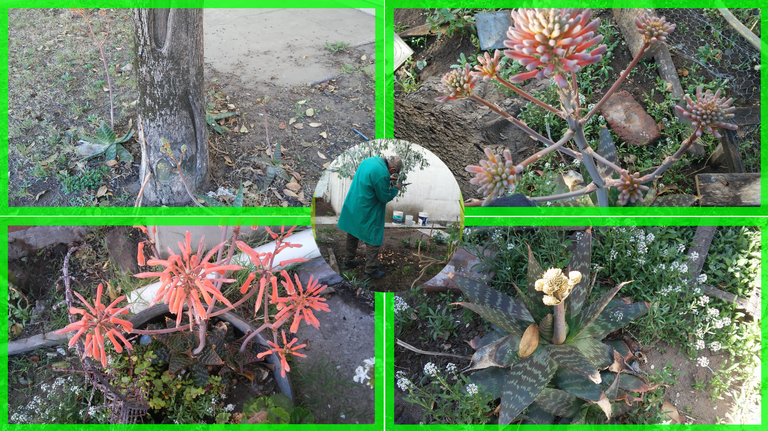
Today I want to talk to you about one of the plants whose essential components we find, in lines, in any product on the supermarket shelves.
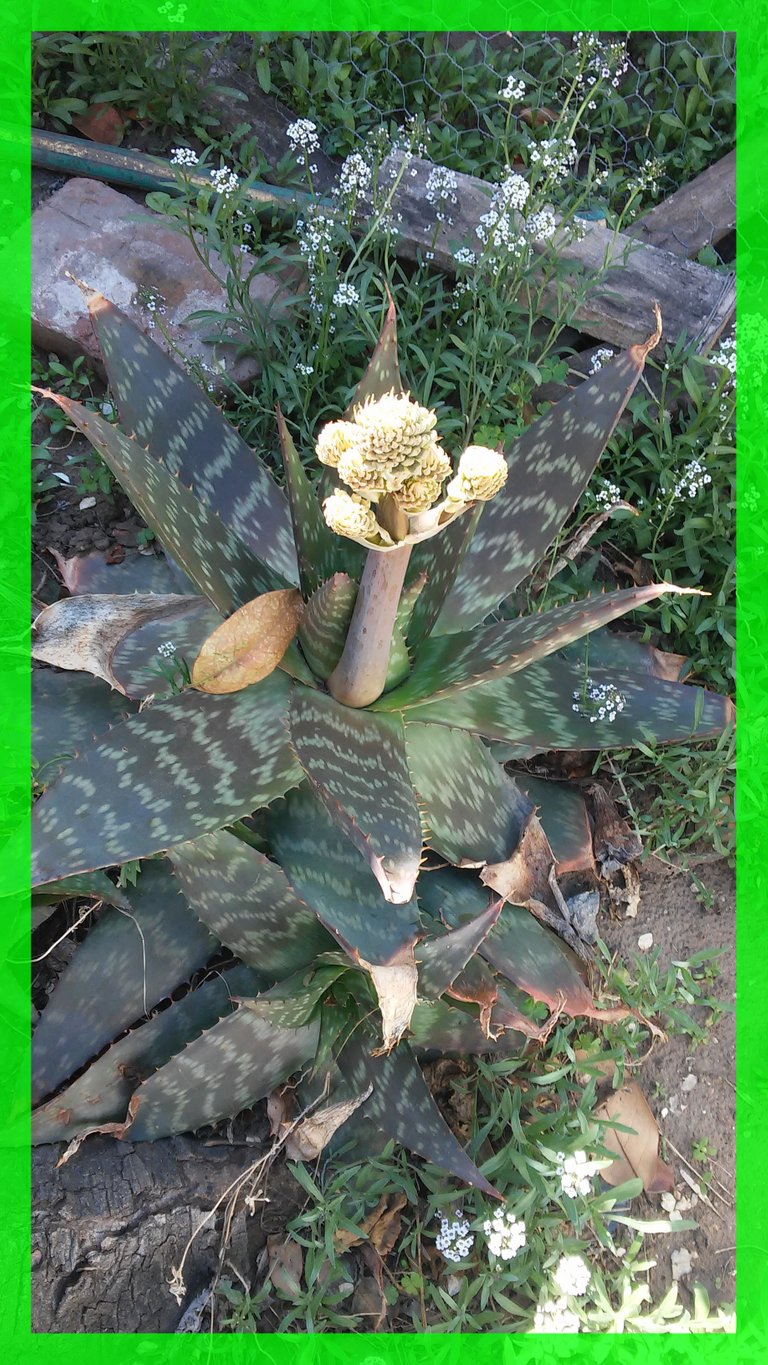
From cleaning items, food, for body hygiene or to protect and beautify our body. Creams, ointments, herbal teas and food products such as yoghurts and other milk derivatives, supplements and the list goes on (almost) infinity.

However, it is a plant that, perhaps due to its rusticity, we do not manage to appreciate in its total goodness and magnitude. Perhaps because of the aggressive aspect of its spines that forces us to wear gloves when we try, for example, to cut a leaf (always from the lower leaves, please!) to use it as a painkiller, against stomach acidity or, directly as it is my case, as lotion after shaving.
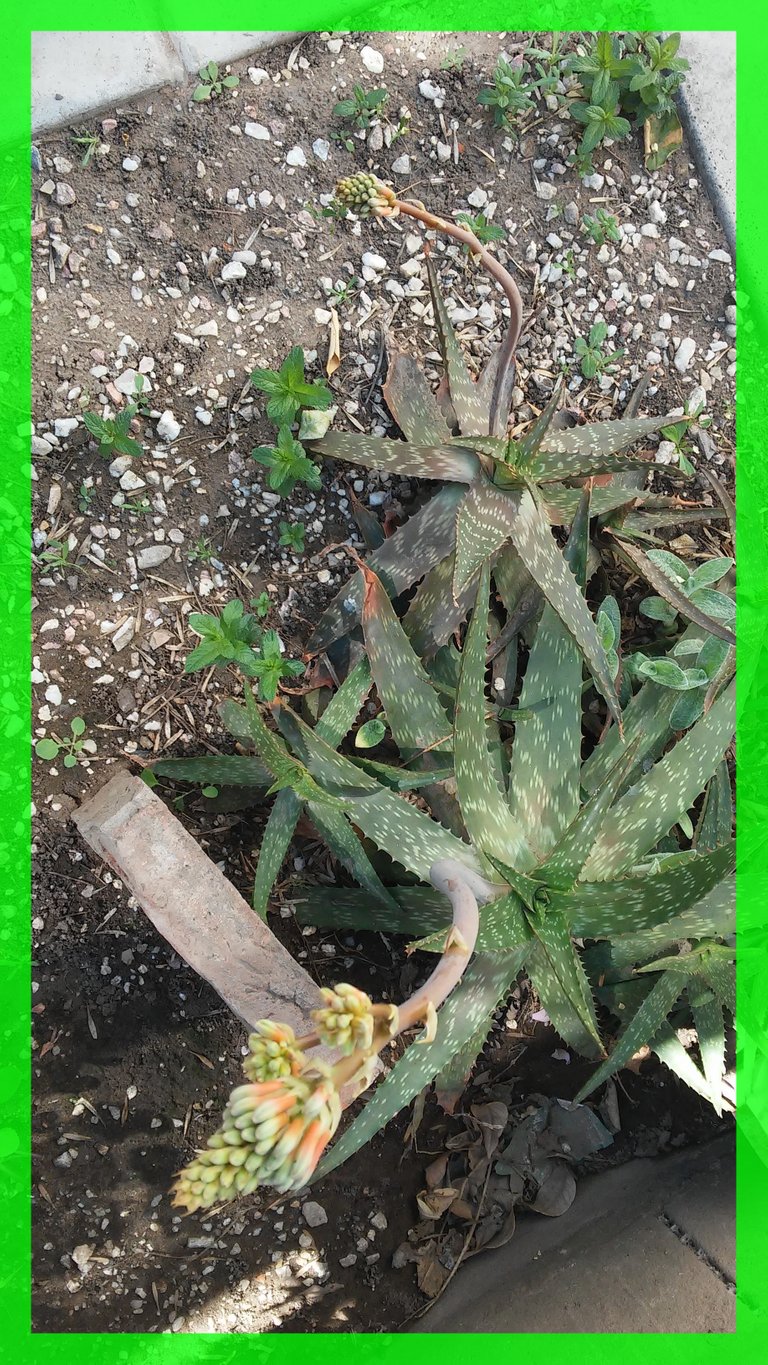
I can guarantee you that if you cut a leaf and leave it in the refrigerator so that it is always cold, it is enough to deprive it of the skin and that jelly inside it, apply it directly to the face after each shave, and it produces an incredible sensation of freshness in the whole face, apart from cauterizing the pores without the aggressiveness of the alcohol that most commercially sold lotions contain.
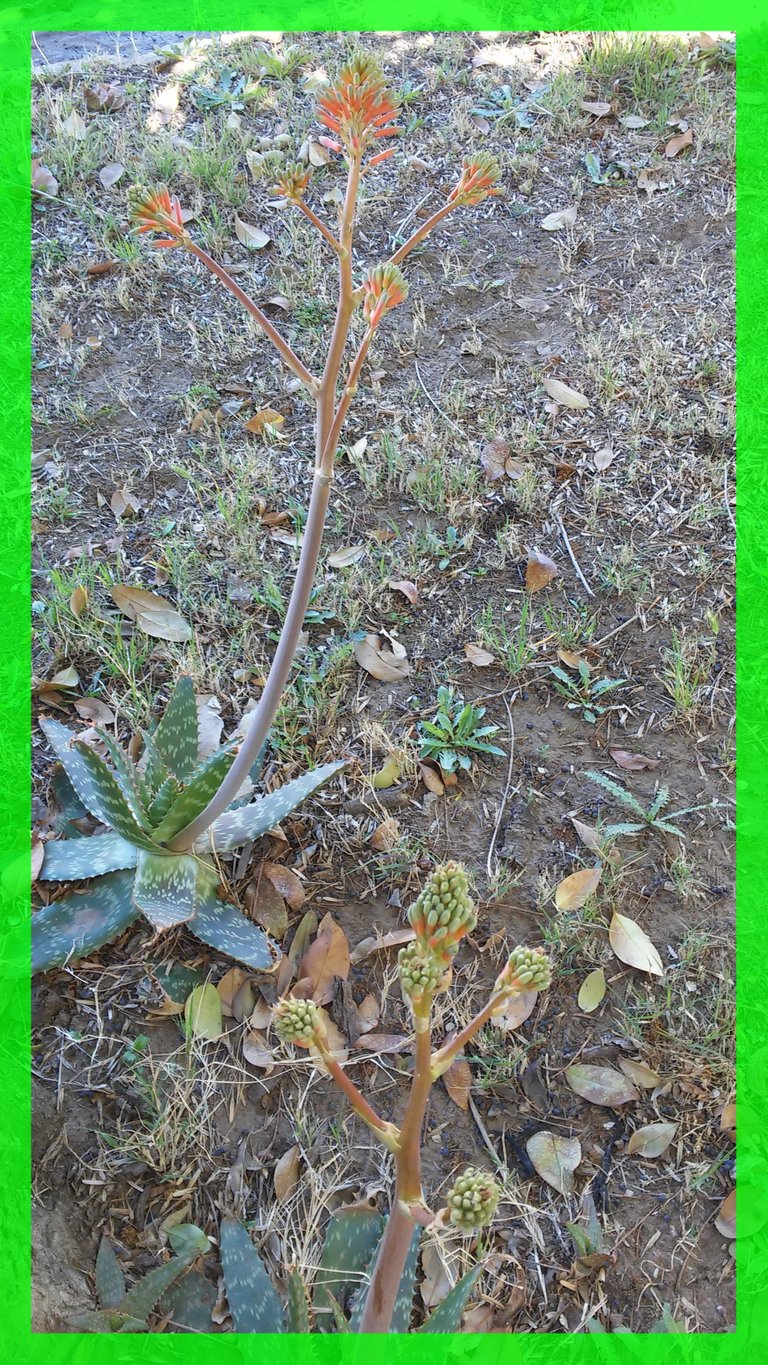
What plant am I talking about? Well, nothing more and nothing less than aloe vera. A plant that we can find in any garden, but whose properties we don't always know how to use. And sometimes we don't even take care of it and give it the attention it deserves.
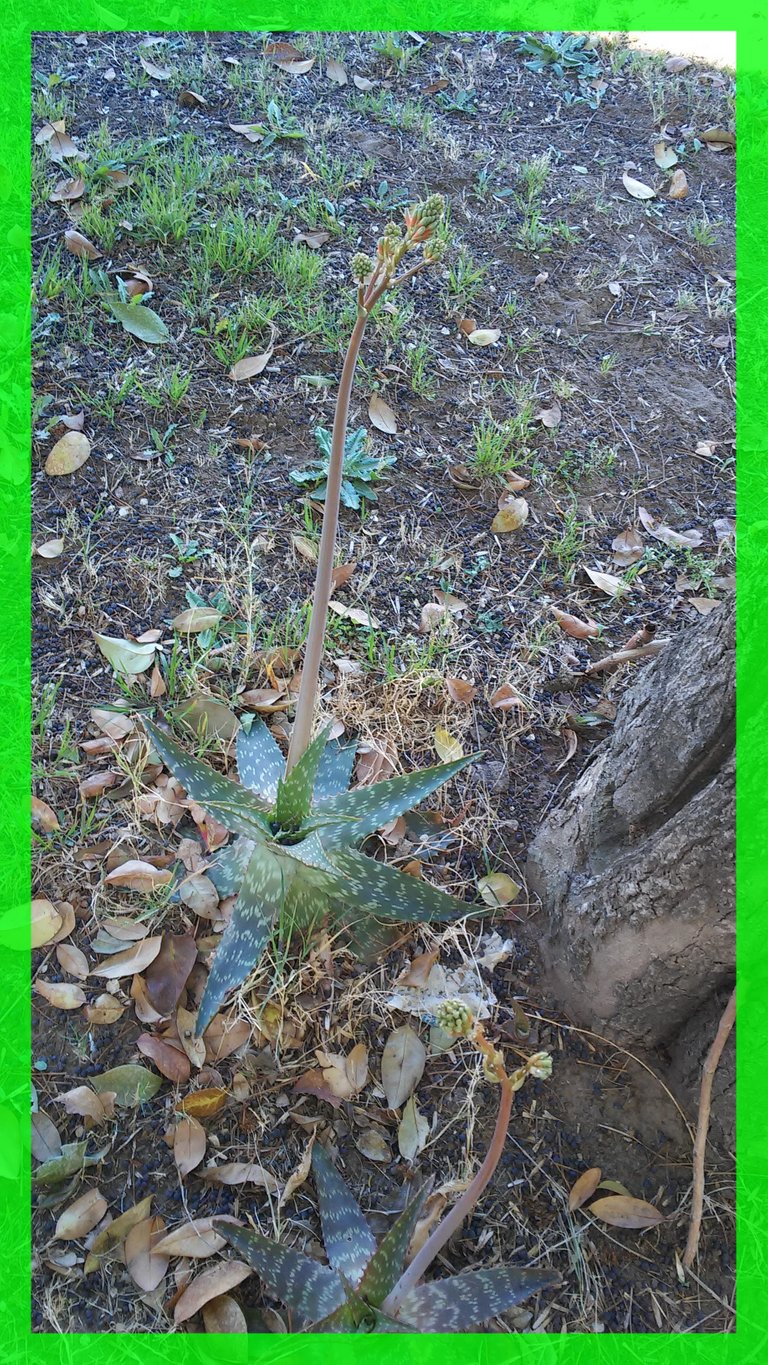
In this post I bring you some reflections and comments on this extremely noble plant that grows in any terrain, does not need irrigation and gives us multiple benefits. Besides, for those who say that it is not an attractive plant, I will show you the opposite: at this moment they are in flower and I show you the photos that I have been able to take in my garden and even outside, on the sidewalk, since I had planted some aloe vera to protect trees from stray animals (dogs and cats) that roam the streets of the town where I live at night, doing their business, sometimes fighting among themselves and digging everywhere.
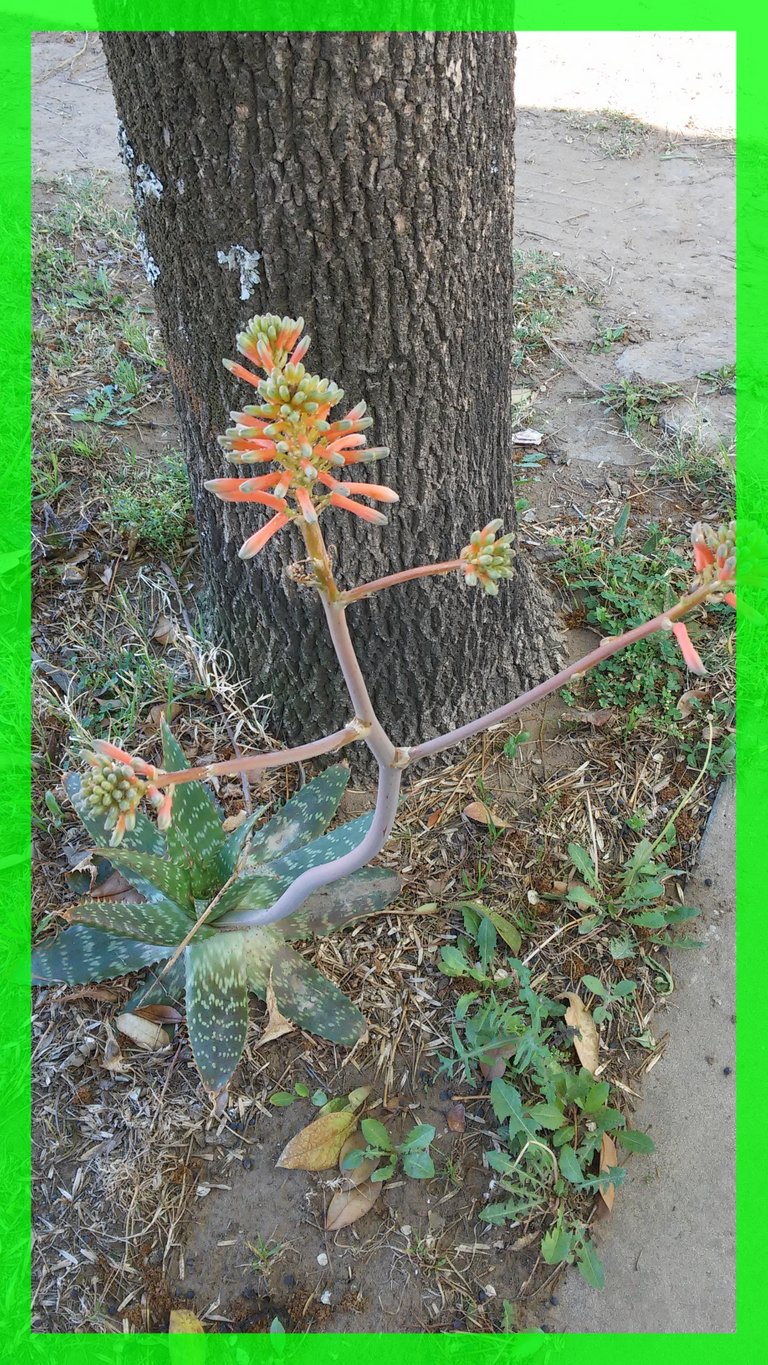
They bloom only once a year at the top of a long stem that starts from the center of the plant. But let's go from the beginning to better understand this noble and attractive multipurpose plant.
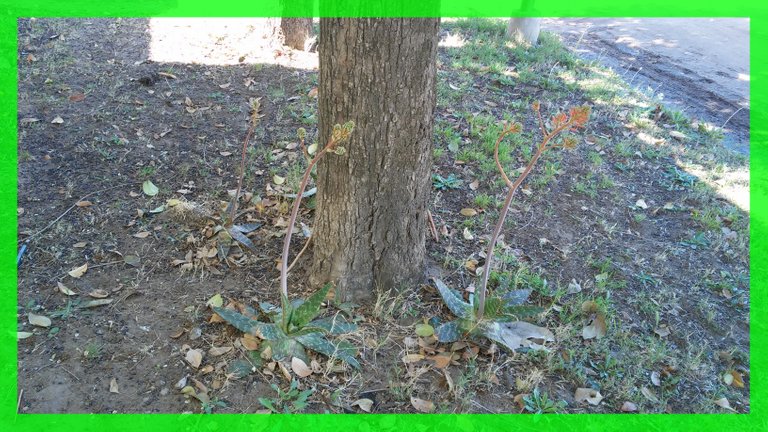
Transplantation and development.
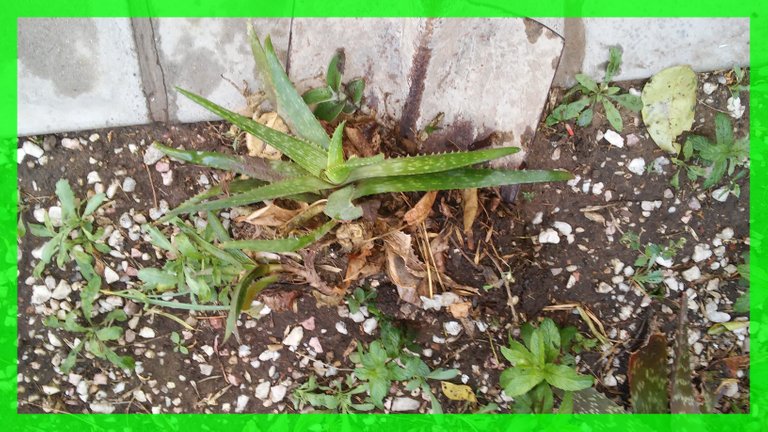
The easiest way to grow aloe vera is to transplant it from a small plant. Over time, aloe vera develops in the form of its own true thicket, overlapping some plants with others. For this reason, the best way to grow an aloe vera is to dig with a shovel at the base of the plant -as you can see in the photo- and extract one or two plants.
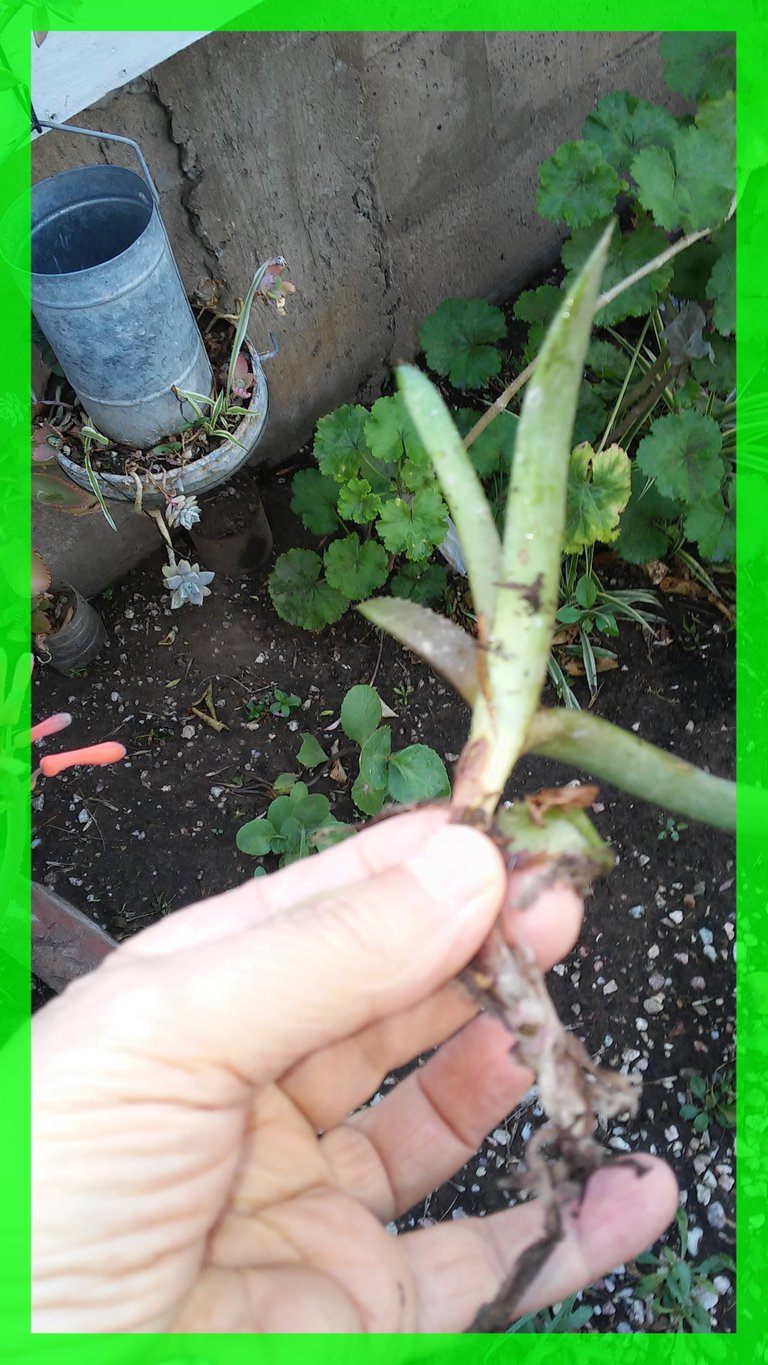
The plant from whose base I extracted two small aloe vera plants is not a real thicket, but I had to intervene, for example towards the end of last year, it is a plant that had grown excessively at the foot of the mandarin tree that I have in my garden and which I have told you about in this post when I pruned it this winter.
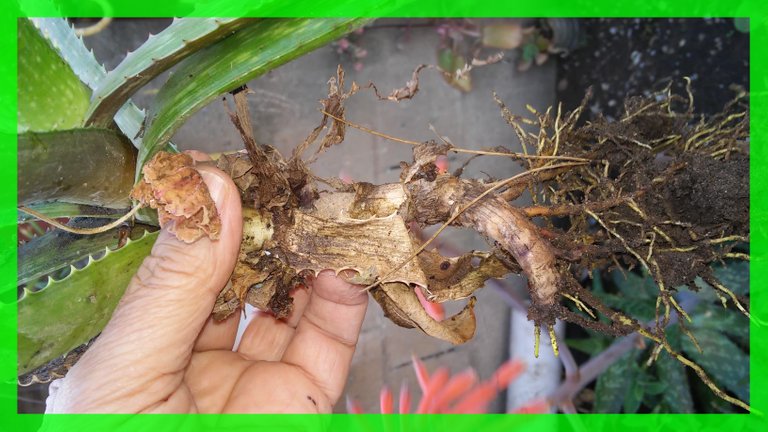
Last year I had to remove much of the aloe vera that had grown next to the trunk and, much to my chagrin, I had to throw it away, since none of the neighbors and acquaintances to whom I offered the newly uprooted plants showed the slightest interest. to transplant them. A true sin that also speaks of the lack of interest on the part of a large part of today's society -at least in my country- in dedicating themselves to cultivating plants and, in this way, protecting the environment and the natural environment that surrounds us.

As you can see in the photo, despite the fact that the plant is small, the roots are thick and consistent, although not very deep. This allows them to develop without problems on the surface of any terrain, regardless of whether the land is fertile or not. To corroborate this example, I have decided to transplant them at the foot of the thick trunk of a wild walnut plant (it does not bear fruit) that I have been forced to cut down because there was a risk that with the strong winds the enormous branches would break and fall above the roof of my house (and the neighbor's) causing extensive damage.
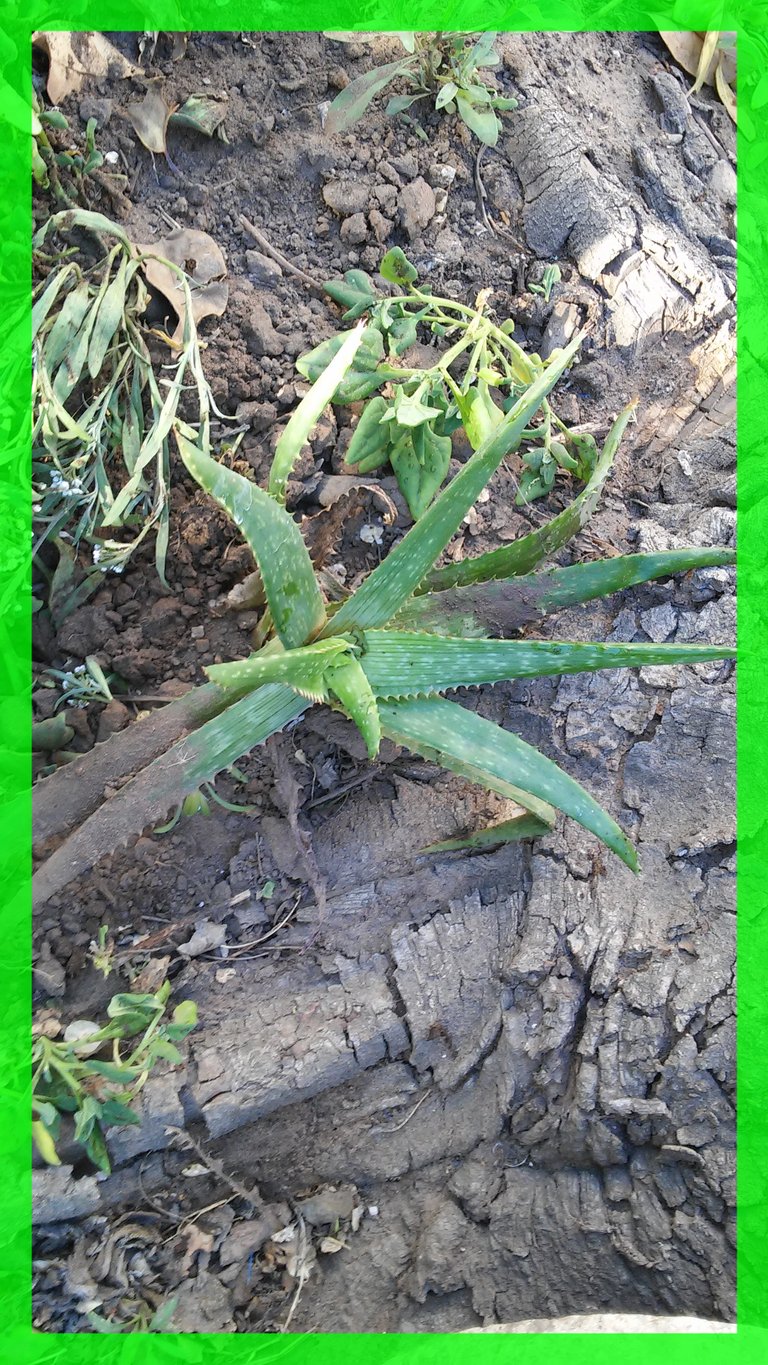
It is not only a space of land in which all the nutrients are absorbed by the thick trunk of the plant (which is still alive), since I have cut it two meters high and therefore it continues to be nourished by the earth without difficulty. It is useful to me because I take the opportunity to cultivate the pumpkins horizontally using that trunk to prevent them from covering the entire field with their leaves. Later when I start with this work I will show it to you. However, despite all these apparent difficulties that prevent any other plant from developing and growing normally, aloe vera will manage to survive without problems and within a year we will see it with its first and beautiful flower.
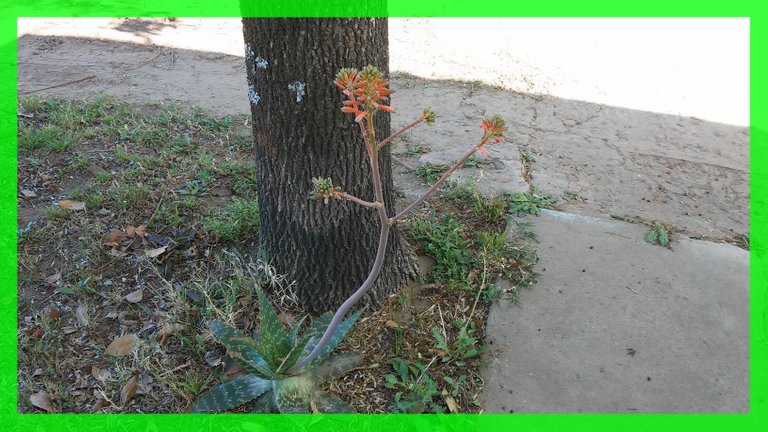
It takes about two years to reach maturity. From that moment you can begin to cut the lower leaves, those that touch the ground, being very careful with the thorns. They are the leaves that, in contact with moisture, first begin to suffer the effects of putrefaction if the ground is too wet or of dryness in the opposite case. This kind of pruning serves to reinvigorate the plant. Never cut the top leaves, even if it is extremely comfortable for us. We prevent the normal growth of the plant that stagnates its growth and soon begins to dry out.

Aloe vera maintenance.
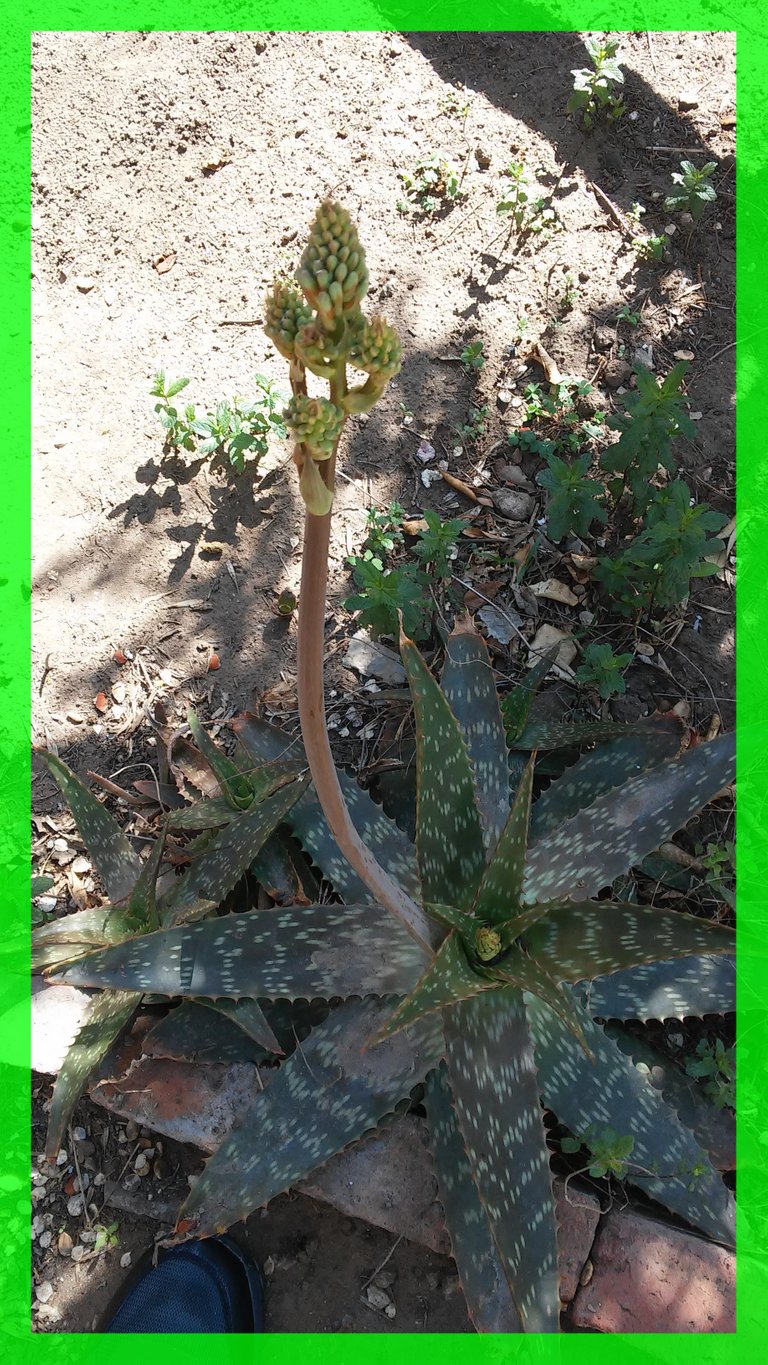
Maintenance is minimal and is reduced to pruning the lower leaves little by little and preventing a thicket from forming, removing the plants that are emerging from their new roots and transplanting them elsewhere. In case of lack of space we can transplant them in jars, cans or any other container. It runs smoothly. It is an extremely noble plant that requires very little care and gives us many benefits.
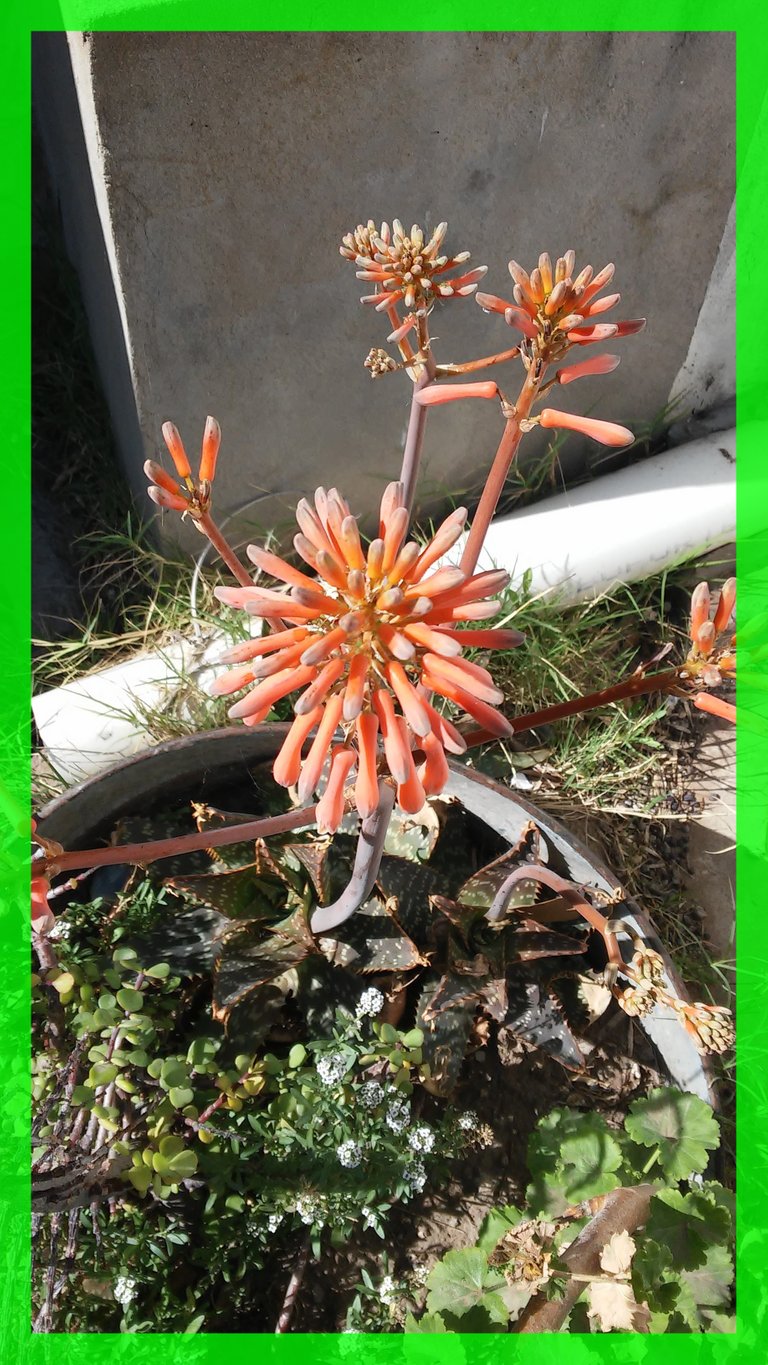
We can even use it as a fence if we want to protect other plants and in this case, apart from the practical effect, we will see a nice aesthetic effect in our garden. The dimensions of my garden are small, for what other huge gardens are, but I tried it a couple of years ago by planting them around the plants on the sidewalk to prevent stray dogs and cats from damaging them by digging holes and doing other damage. The result has been unbeatable and except for a few that have been lost, most have formed a real fence around the plants. Observed in full flowering period they are very beautiful.
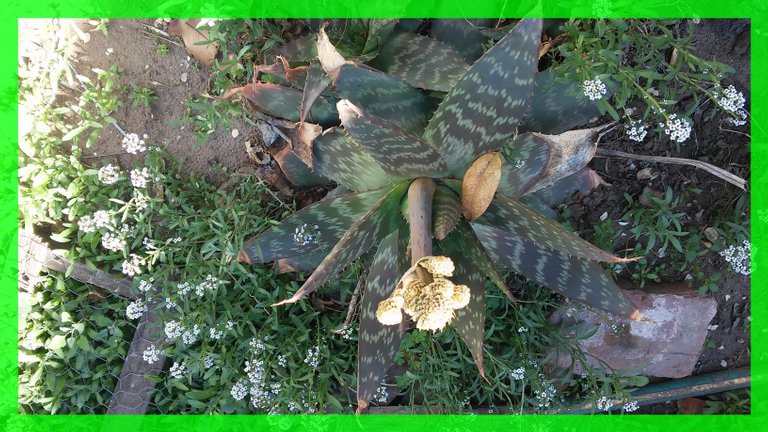
When you cut the leaves, try to choose the thickest ones, since they reach their full maturity when the thickness of the leaves is about one centimeter in the thickest part. In this way you can make the most of all the gelatinous matter they contain inside.
The flower.
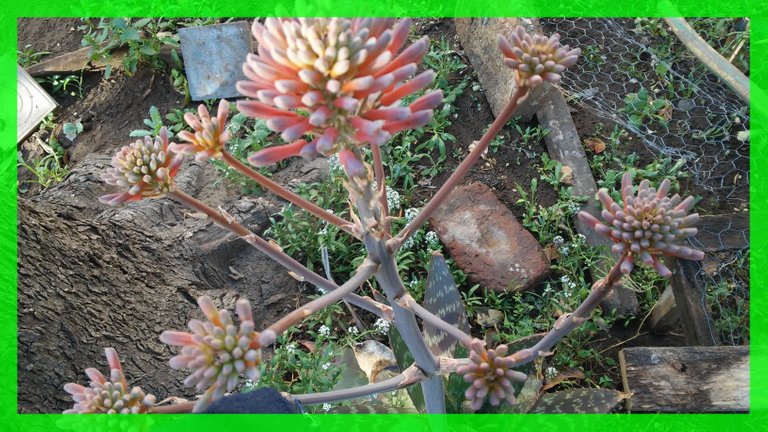
The variety that I have in my garden blooms in the first days of spring, when the days are already warmer and in general the rest of the plants begin to green up and also give flowers. In general, it does not have too much perfume, although its tubular shape makes it very beautiful and delicate. The stem develops first and then flowers begin to appear at the tip, usually taking a week or more to fully open.
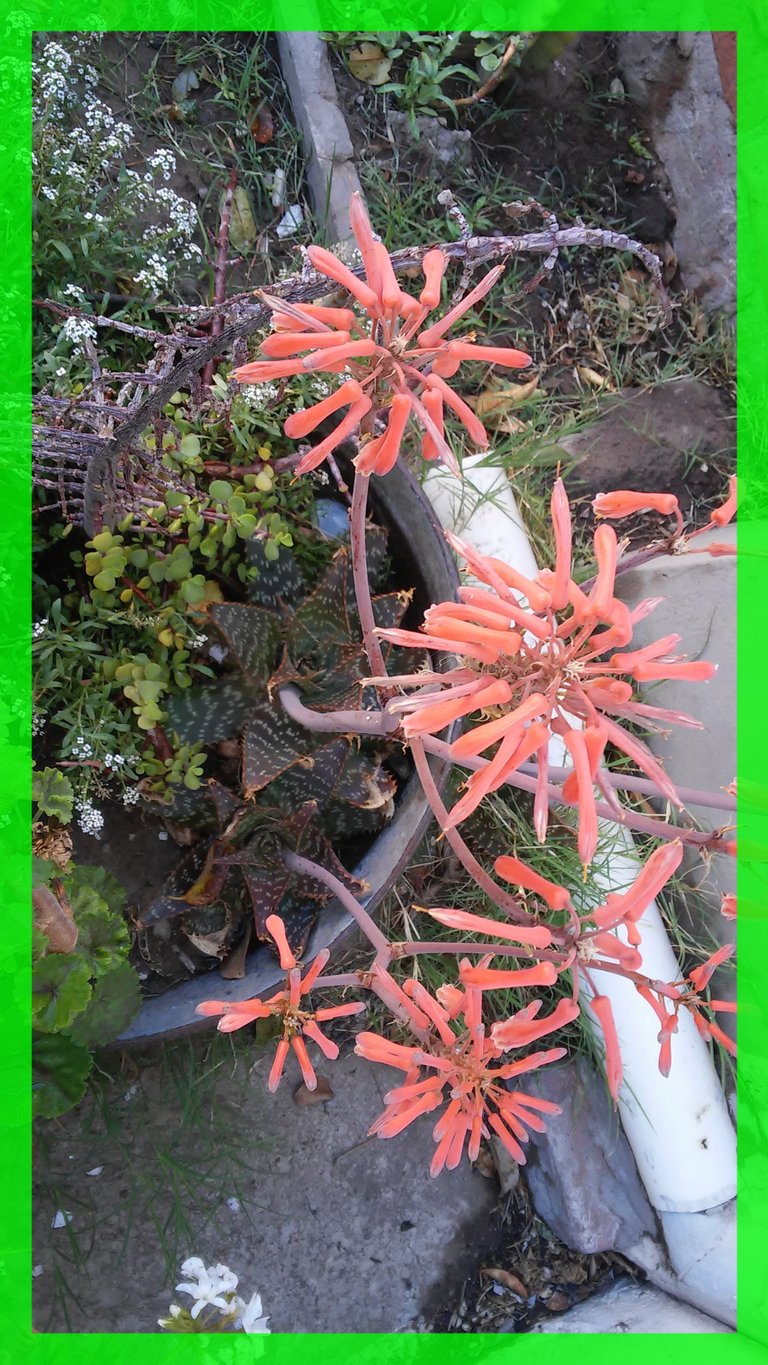
It gives a single flower a year, usually between two and three years of age. Then the stem can be cut because it will not bloom again until the next year and in another position. On the other hand, leaving it after the flower has dried takes away the strength of the plant.
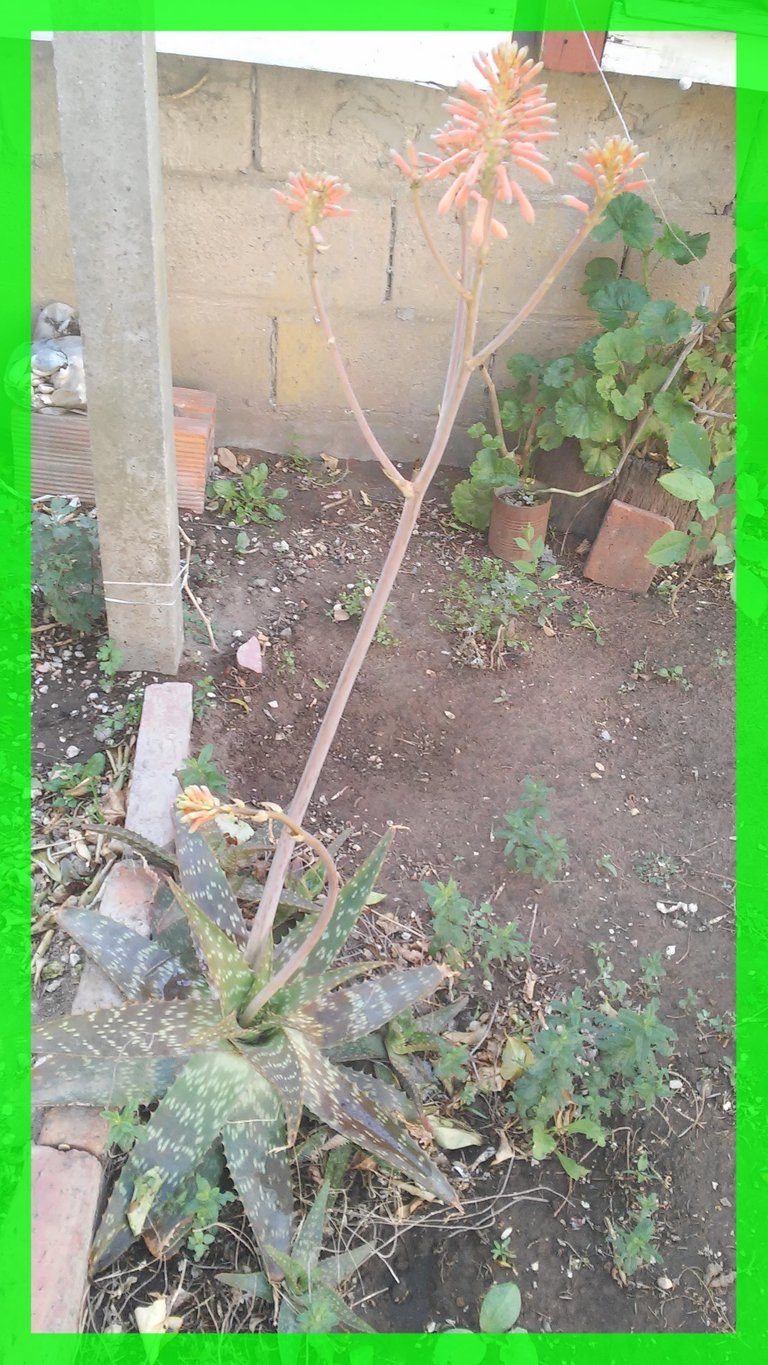
The flowers of my aloe vera are deep orange, but I have seen others yellow and with different shades between light yellow and the most intense orange. In any case, there are many varieties that take on different characteristics according to the type of climate in which they develop.
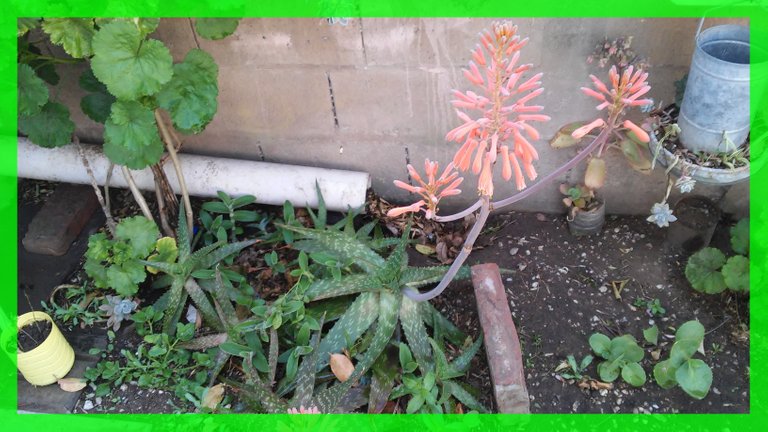
Apparently from what I read, it is a plant native to the Arabian Peninsula and has the particularity of developing without problems in tropical climates, with abundant vegetation, subtropical climates or even arid climates. Its vegetal nobility makes it adapt to any type of climate and terrain.
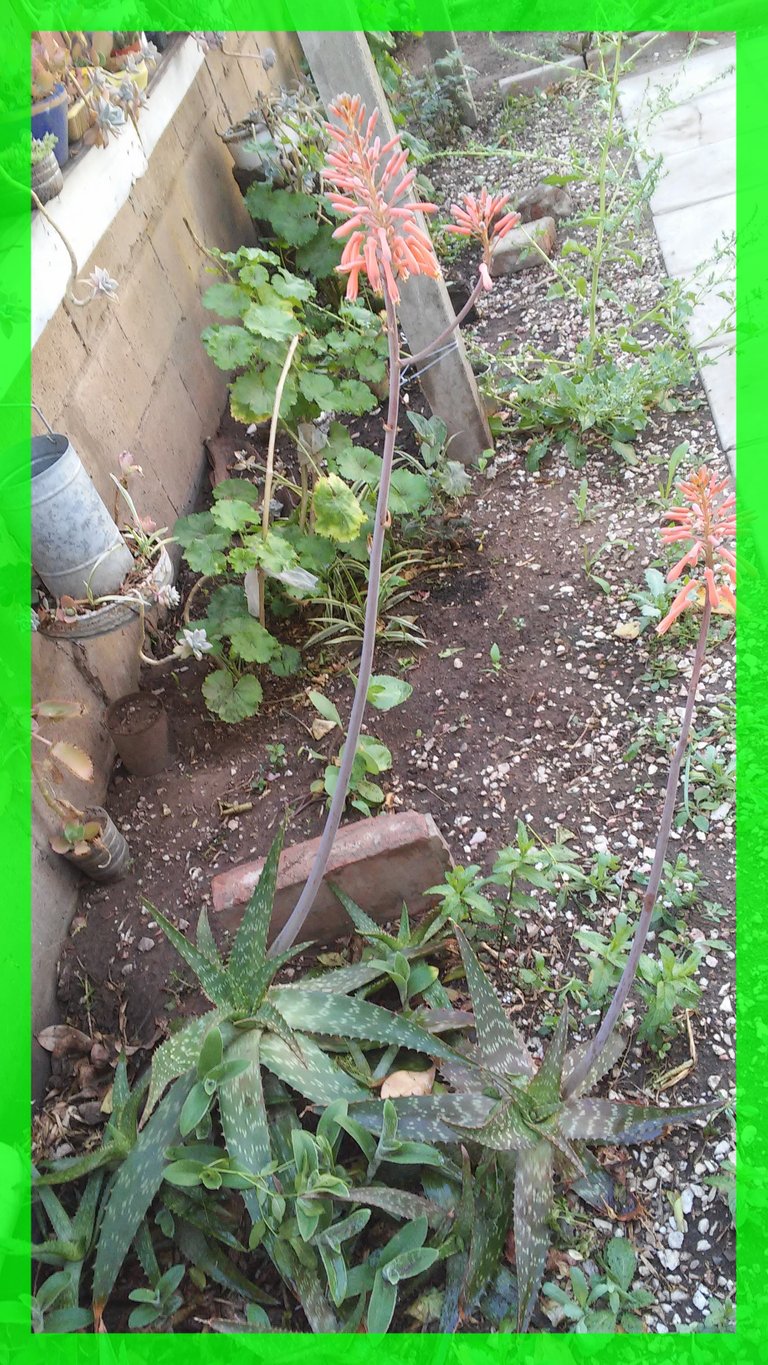
Like any other flowering plant, they are pollinated by various types of insects. I have to say that the dear bees are not very likely to go to the aloe vera flowers. I don't know the reason. I know, however, that his favorites, in my garden, are the citrus flowers, especially the orange tree, and also the rosemary flower. Perhaps it is because of the sweet and very persistent perfume that they emanate, felt several meters away.
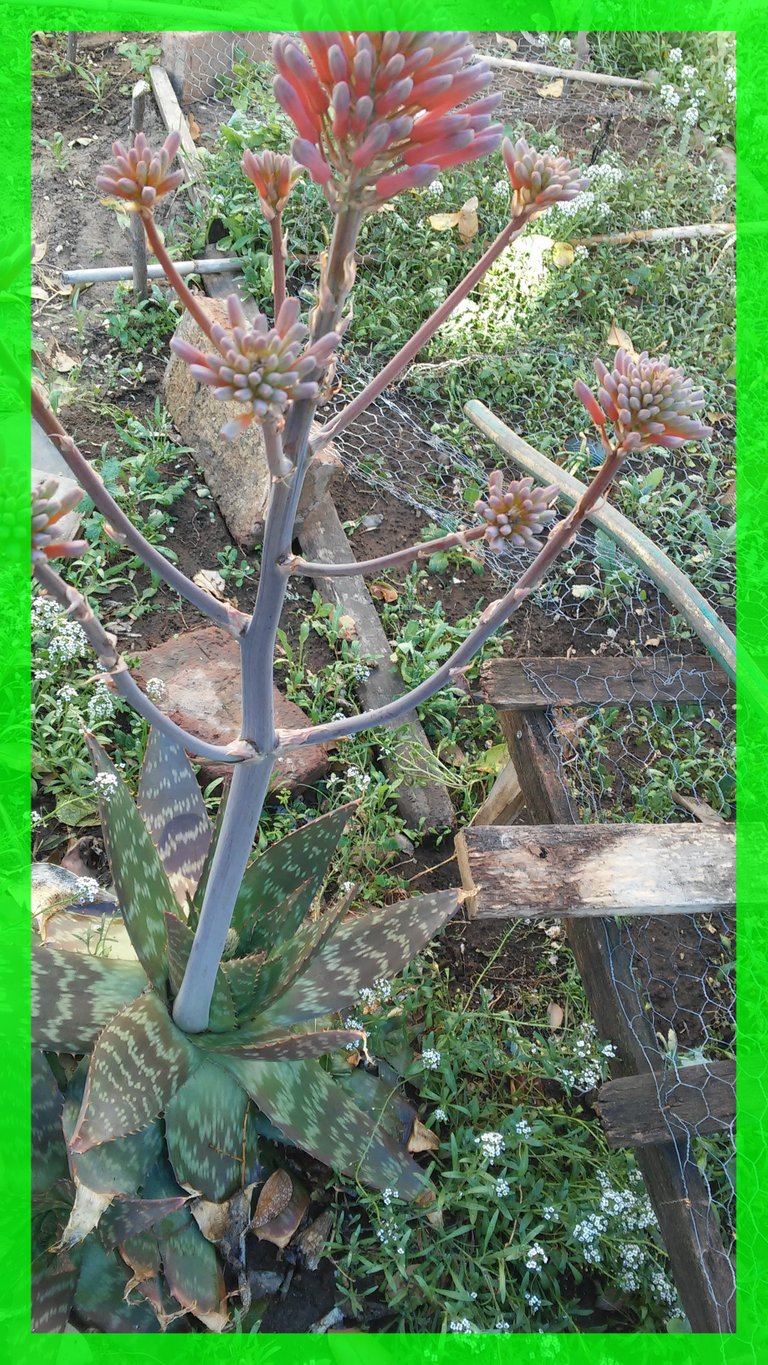
We have an aloe vera here and I can say that it has a lot to offer especially in some natural remedies. I have to agree also on that part that they are sometimes being ignored and just letting them die out there not knowing that it has a lot of benefits we can get from it.
It's my first time to see it's flowers and maybe the variety that we have here in the Philippines are not producing flowers . It's big already and as I read your reply on the comment below, I will wait patiently for it's flowers if that's the case.
Thanks for comment @jhero22
In fact there are many varieties of aloe vera, there are even plants of a yellowish color that grow in the desert.
If your plant is similar to the one in the photos that I have published, you would have to wait a couple of years after the plant has developed for it to produce the flower.
Your post has been chosen by @ligayagardener for the next addition of 'The Garden Shed', a collection of archived posts by @gardenhive that feature useful gardening advice, DIY tips, homesteading tips and inspiring gardens.
Thank you for supporting, voting and curating my content @gardenhive.
This is my first time of seen aloe vera that have flowers . Thanks for sharing this post.
Several users have given me the same answer @olamummy
In this southern part of South America this variety is quite common. Perhaps it is due to weather conditions.
Greetings and have a good weekend.
Great post! Aloe is the most popular plant in my country, Venezuela, there's an aloe plant in every house or apartment 😁.
Thanks for comment @gatubela
Indeed, aloe vera is a plant of tropical and subtropical origin, for this reason in your country I think it finds the ideal conditions to develop.
That's true, in my house we have 3 aloe plants although their flower is very different from yours
That's true, in my house we have 3 aloe plants although their flower is very different from yours
I'm familiar with aloe vera but I've never seen a flower like the one in your post.
does it take years to be patterned like that? I'm curious about that. mine is not darker in color
Generally the aloe vera flower comes out after 2-3 years. If you transplant an already large plant, it may take less time. But the roots have to be very solid in the ground so that it produces the long pod and the flower at the tip.
You have to keep in mind that there are many varieties of aloe vera @anggreklestari.
Congratulations @goisal! You have completed the following achievement on the Hive blockchain and have been rewarded with new badge(s):
Your next target is to reach 2000 upvotes.
You can view your badges on your board and compare yourself to others in the Ranking
If you no longer want to receive notifications, reply to this comment with the word
STOPThank you for supporting my content @hivebuzz!
Thanks for sharing that info about Aloe Vera. It's interesting that your variety grows a branched stem while the one we have here has a single, straight stem. There are so many useful plants around us!
There are many varieties of aloe vera, each with its own characteristic leaf types and different flowers. There is even a variety that has a bouquet of flowers very similar to the lupines of Patagonia
Sorry for the delay in replying and thanks for commenting @ligayagardener.
No worries about delays, I'm not here everyday myself.